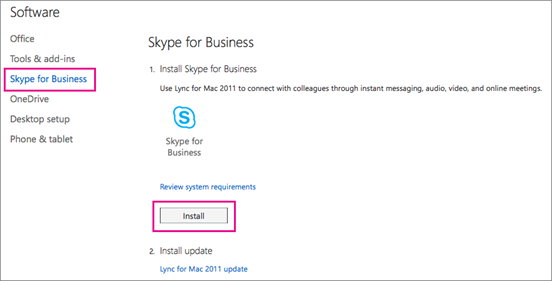
- #MICROSOFT LYNC FOR MAC SHUTDOWN HOW TO#
- #MICROSOFT LYNC FOR MAC SHUTDOWN REGISTRATION#
- #MICROSOFT LYNC FOR MAC SHUTDOWN WINDOWS#
(This record is rarely used in real world deployments). which should only ever be populated in an external DNS zone.

Host (A) record is tried next and is often used for both internal and external resolution. Host (A) record is then queried and would normally be resolvable only against internal DNS zones, in the same fashion that lyncdiscoverinternal would have been (if it existed).
#MICROSOFT LYNC FOR MAC SHUTDOWN WINDOWS#
The Lync 2013 Windows Store app actually stops here (as shown in the next section) and does not advance further, hence the requirement for deploying the Lync Discover service correctly even if mobility client are not planned for support in an environment. If neither of these records are resolvable then the legacy DNS Service Locator Record (SRV) and Host Record (A) fall-back process is used. Host (A) record is then attempted and would be the preferred first resolution for external clients. This record should only be available to hosts with acesss to the internal DNS servers, so external clients (not connected via VPN) should typically receive no response for this query and then move on to the next. The results above clearly show that the new order of preference for the Lync 2013 Windows client is to leverage the Lync Discover service which was first introduced in Lync Server 2010 CU4 for supporting the Mobility clients.
#MICROSOFT LYNC FOR MAC SHUTDOWN REGISTRATION#

The following test scenario uses Wireshark but the same process can be used with other network packet capture utilities. As each autodiscover step fails to receive a suitable response the process will advance to the next logical step. In order to observe this behavior simply run a network capture on a workstation running the Lync 2013 client and then attempt to sign-in using a bogus SIP domain name. Changes to guidance and deployment practices surrounding the Autodiscover service are also discussed.
#MICROSOFT LYNC FOR MAC SHUTDOWN HOW TO#
This article shows how to verify and test the automatic sign-in behavior of various Lync clients in an environment by showing the different client behavior and comparing the Windows client to the Windows Store app. A recent NextHop article explains in some detail the fact that the new Windows Store Lync client only supports the newer Lync Autodiscovery method for locating a Lync registrar to sign-in to the environment.


 0 kommentar(er)
0 kommentar(er)
